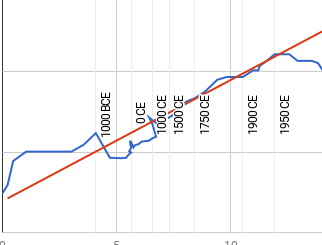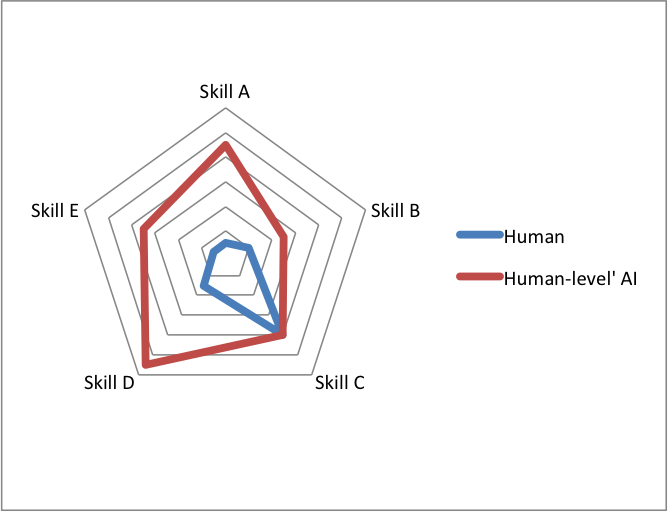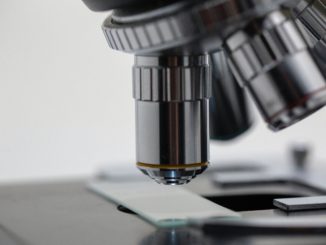The Singularity Is Near is a book by Ray Kurzweil. It argues that a technological singularity will occur in around 2045. This appears to be largely based on extrapolation from hardware in combination with a guess for how much machine computation is needed to produce a large disruption to human society. The book relatedly claims that a machine will be able to pass a Turing test by 2029.
Details
Calculation of the date of the singularity
The following is our reconstruction of an argument Kurzweil makes in the book, for expecting the Singularity in 2045.
- In the early 2030s one thousand dollars’ worth of computation will buy about 10¹⁷ computations per second (p119)
- Today we spend more than $10¹¹/year on computation, which will conservatively rise to $10¹²/year by 2030 (p119-20).
- Therefore in the early 2030s we will be producing about 10²⁶-10²⁹ computations per second of nonbiological computation per year, and by the mid 2040s, we will produce 10²⁶ cps with $1000 (p120)
- The sum of all living biological human intelligence operates at around 10²⁶ computations per second (p113)
- Thus in the early 2030s we will produce new computing power roughly equivalent to the capacity of all living biological human intelligence, every year. In the mid 2040s the total computing capacity we produce each year will be a billion times more powerful than all of human intelligence today. (p120)
- Non-biological intelligence will be better than our own brains because machines have some added advantages, such as accuracy and ability to run at peak capacity. (p120)
- The early 2030s will not be a singularity, because its events do not yet correspond to a sufficiently profound expansion of our intelligence. (p120)
- In the 1940s, when the computing capacity we produce each year is a billion times more powerful than all human intelligence today, these events will represent a profound and disruptive transformation in human capability, i.e. a singularity. (p120)
Relevance of software
While he doesn’t mention it in the prediction explained above, Kurzweil appears elsewhere to agree that substantial software progress is needed alongside hardware progress for human-level intelligence. He says, “The hardware computational capacity is necessary but not sufficient. Understanding the organization and content of these resources—the software of intelligence—is even more critical and is the objective of the brain reverse-engineering undertaking.” (p126).
His argument that the necessary understanding for producing human-level software will come in time with the hardware appears to be as follows:
- Understanding of the brain is reasonably good; researchers rapidly turn data from studies into effective working models (p147)
- Understanding of the brain is growing exponentially:
- Our ability to observe the brain is growing exponentially: ‘Scanning and sensing tools are doubling their overall spatial and temporal resolution each year’. (p163)
- ‘Databases of brain-scanning information and model building are also doubling in size about once per year.’ (p163)
- Our ability to model the brain follows closely behind our acquisition of the requisite tools and data (p163) and so is also growing exponentially in some sense.
Human-level AI
According to Kurzweil, ‘With both the hardware and software needed to fully emulate human intelligence, we can expect computers to pass the Turing test, indicating intelligence indistinguishable from that of biological humans, by the end of the 2020s.’
The claims that hardware and software will be human-level by 2029 appear to share their justification with the above claims about the timing of the Singularity.
Kurzweil bet that by 2029 a computer would pass the turing test, and wrote an article explaining his optimism about the bet here.
Comments
If the ‘singularity’ is meant to refer to some particular event, it is unclear why this event would occur when the hardware produced is a billion times more powerful than all human intelligence today. This number might make some sense as an upper bound on when something disruptive should have happened. However it is unclear why the events predicted in the early 2030s would not cause a profound and disruptive transformation, while those in the mid 2040s would.
Kurzweil’s calculation of the date of the Singularity appears to have other minor gaps:
- The argument is about flows of hardware, where it wants to make a conclusion in terms of stocks of hardware. Kurzweil wants to compare total biological and non-biological computation. However he calculates the computing hardware produced per year, instead of the total available that year, or the computation done in that year. These numbers are probably fairly similar in practice, if we suppose that hardware lasts a small number of years.
- That non-biological machines appear to have some advantages over humans does not imply that some given non-biological machines have advantages overall.
- The argument suggests software will develop ‘fast’ in some sense, but this isn’t actually compared to hardware progress or measured in years, so it is unclear whether it would be developed in time.
A key disagreement with other commentators appears to be over the rate of progress of understanding relevant to producing software. In particular, Kurzweil believes that such understanding is growing exponentially, and that it will be be sufficient for producing machines as intelligent as humans in line with the hardware. Allen, for instance, has argued with this. Resolving this disagreement would require better measures of neuroscience progress, as well as a better understanding of its relevance.



4 Trackbacks / Pingbacks
Comments are closed.